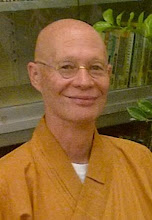The idea if suffering can present a lot of problems for us as we embark on our Buddhist journey. The first of the Four Noble Truths is that Life is Suffering.
There have been many books written on the subject and many great Buddhist Masters have written and spoken on the topic, I will not try to emulate them. These words are my simple observations and understanding and I pass on whatever may be helpful.
The word for suffering as it is understood in Buddhism comes from the Pali word dukkha. As it is a word coming from a different time and cultural tradition it is not easy to translate and often open to different translations and interpretations. In Buddhism there are three types of Dukkha. (1) Suffering or pain which includes both physical as well as mental and emotional pain and suffering (2) the Dukkha of impermanence and change. Nothing remains. All changes. Things wither and decay. (3) The suffering of Conditioned States. Everything is dependent on everything else. This is a very subtle concept but briefly it means that as our perceptions change so do our experience and thus can cause pain and suffering.
May translators have avoided the “S” word Suffering and preferred to translate it as dissatisfaction or irritation. My tendency is to think that this is just nodding to what is fashionable rather than confronting reality. It is a bit like avoiding the word “death” and calling it “passing away” or some other euphemism. There is an embedded a subtle avoidance of the truth. No one likes to be confronted with the ugly and gross side of life. However, if we are to advance in our practise we must take the bull by the horns and stand firm in front of the ugly so that we may pass through to the other side.
We are a society addicted to Happiness. While there is absolutely nothing wrong with feeling happy and experiencing the pleasant emotions, if, on the other hand we hang on to it we become addicted and blinded. We have become conditioned to think that there is nothing beyond being happy. Happiness, however, is purely the temporary withdrawal of suffering – not its absence. Suffering continues to lurk in the background like flies ready to pounce on cow dung.
When I was a young boy at school there was a much stronger lad who liked to tease me. He tricked me one day into thinking that we could have some fun on a see-saw. Now, I never did like see-saws because I was afraid of heights at this point in my life. Nonetheless he offered to give me some sweets if I got on the see-saw with him. It was a horror ride! He would slam the see-saw down with all his strength catapulting me into the air leaving me hanging on for my life. Then I would come hurtling down again for a few seconds reprieve before being shot up gain in dread and fear. This seemed to go on for an eternity. Finally I figured out that the only way out of this reprieve-suffering-cycle was to get the timing right and jump off the see-saw. I did, and my teaser came slamming back down.
Our addiction to “things” and happiness are a bit like the see-saw. There is a temporary feeling of delight followed again by the nagging sense of emptiness and the desire to fill the void with more things. In our consumer world the commercial enterprises thrive on this psychology and our addiction.
From an early age we are taught to “be happy”, to find happiness and to live happily ever after. This reasoning and happiness training is pounded into us through our education so that it rests in our bones. Then along comes a Buddhist like me and tell you that you are being led up the garden path and then tells you some truths about suffering. No wonder you are turned off! We have become so conditioned that many of us are unable any longer to see beyond the grasping to an awakened life of joy.
The Buddha was not out to make life a misery for us. He found an anti-dote to misery, a Middle Way, which with practice brings abiding joy and peace. All that it takes is the courage to jump off the see-saw.
There is nothing “wrong” with having nice things. This is not the issue. The issue is that are we able to see them clearly for what they are – impermanent and ultimately the source of non-happiness. We must let go and not be tempted by the illusionary sweets on offer from the consumer world. The illusion comes with a price tag. A high price.
I don’t think I ever did go near a see-saw again. Even now when I walk through a park I observe them at a distance as they stand as a reminder to me that life can be like this too. It takes courage as a young child to jump off a see-saw. It takes courage as an adult to jump off the see-saw of life. When you do you will be awakened to a new and more fulfilling life. This is what our Dharma practice has promised us.
Namo Amituofo
Subscribe to:
Post Comments (Atom)


No comments:
Post a Comment